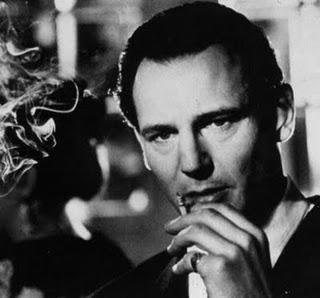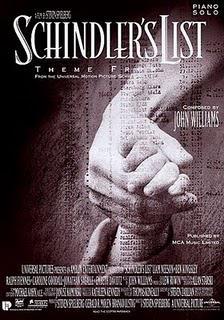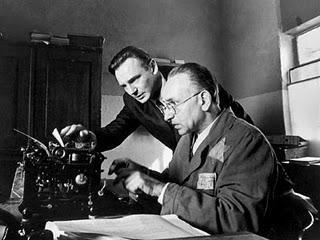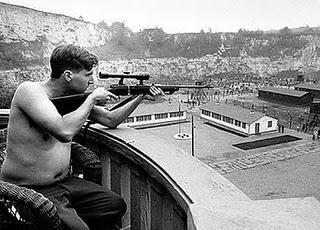 Ask most movie fans and they're likely to tell you their pick, or short list of picks, for the best movie of all time. As a movie fan, I'm no different, but until recently I hadn't narrowed my list down to one film. Now I have, but before I reveal what it is, let's consider some more authoritative opinions.
Ask most movie fans and they're likely to tell you their pick, or short list of picks, for the best movie of all time. As a movie fan, I'm no different, but until recently I hadn't narrowed my list down to one film. Now I have, but before I reveal what it is, let's consider some more authoritative opinions.Perhaps the most respected list is that compiled once per decade by Sight and Sound Magazine. It's two top ten lists actually, one developed from the individual rankings of nearly 150 critics and academics the other from the individual lists of over 100 directors. The latest lists are from back in 2002 (a new list should be released next year). Not surprisingly, Citizen Kane ranks number 1 on both lists (click here for the critic's and director's lists). Orson Welles' masterpiece is the movie most often mentioned as the greatest of all time. After 70 years, it still holds up; seeming fresh and inventive. It's not my pick for the best movie though. The Godfather, The Godfather, Part II, Vertigo, 8 1/2, and La Regle de jeu are the other films that are included on both lists. I haven't seen the last two (one by Fellini and the other Renoir), but the other three are definite classics, and are high on my ranking, but not in the top spot.
The American Film Institute released a list of the Top 100 films in 1998 and then updated the list in 2008. Again, Citizen Kane ranks number 1 followed by The Godfather, Casablanca, and Raging Bull. I like Casablanca and love Raging Bull, probably Martin Scorsese's finest film and certainly his best directing performance. The internet movie database (IMDB), compiles a list of the Top 250 films based on user's individual film ratings. The number 1 ranking is held by The Shawshank Redemption followed by The Godfather, The Godfather, Part II, The Good, the Bad, and the Ugly, and Pulp Fiction. Personally I like The Shawshank Redemption but certainly not as the best movie of all time; Pulp Fiction is great. Still, none of these are my pick.
Other films that rank high on various lists or are frequently mentioned as one of the best of all time include, 2001: A Space Odyssey, Battleship Potemkin, Dr. Strangelove, Gone With the Wind, Lawrence of Arabia, Rashomon, Schindler's List, Seven Samurai, Singin' in the Rain, and The Wizard of Oz.
Now ask me and I'll tell you that I'm a big fan of Francis Ford Coppola's first two Godfather movies, Citizen Kane is great, Lawrence of Arabia is an amazing viewing experience, Raging Bull has some of the best editing moments of any film, Roman Polaski's Chinatown is pitch-perfect, and Terrence Malick's Days of Heaven is haunting. These any many more movies rank high on my list, but it's another that takes my top spot.
---
 Schindler's List is the best film ever made. I offer no set criteria or quantifiable formula for this assertion, ultimately my opinion, like everyone's when it comes to art, is subjective. I will share my thinking though.
Schindler's List is the best film ever made. I offer no set criteria or quantifiable formula for this assertion, ultimately my opinion, like everyone's when it comes to art, is subjective. I will share my thinking though.Truth on Film
First, Schindler's List is a rare instance of truth on film. As I've written, World War II was perhaps the greatest calamity in human history. Over 60 million people died world-wide because of the conflict between 1939 and 1945, two-thirds were non-combatants. Most of these were European or Asian civilians and many, more than ten million people, were systematically murdered by the Nazi regime. This type of genocide cannot be conceptualized, at least not today. Yet as vast as the numbers are, they are made up by individuals whose property was confiscated; whose self-respect, physical security, freedom, and rights were eliminated; and who were ultimately murdered in any number of horrible ways. Hitler's Holocaust is a stark demonstration of the baseness and primal terror that humans are capable of. Never have I seen this reality as clearly and unsparingly put to film as with Schindler's List.
In many ways, this movie was a surprise. By 1993, its director, Steven Spielberg was already famous for a long list of successful, entertaining, and imaginative films like Jaws, Raiders of the Lost Ark, E.T., The Color Purple, and earlier that year, Jurassic Park. All of these films demonstrated technical merit and professional skill, but not the maturity (for lack of a better word) that an examination of the Holocaust would seem to require. Spielberg had even twice before tried his hand at World War II movies, unsuccessfully with 1941 (1979) and semi-successfully with Empire of the Sun (1987). Perhaps sensing his potential limitation, Spielberg waited to make the movie, even offering it to other directors. The waiting served him well.

Schindler and Stern developing the list
The story centers on Oskar Schindler and his gradual transformation from an indifferent industrialist seeking to profit from the war to an active liberator leveraging his wealth and security to rescue more than 1,000 Jews from death. The movie is presented in a series of vignettes that show the diminution of rights and consolidation of Jews in the Krakow ghetto, the clearing of the ghetto, life in the forced labor camp at Plaszow, the concentration and death camp at Auschwitz, and finally the relative safety at Schindler's munitions factory in Czechoslovakia.Characters
Oskar Schindler is a great hero. Who can claim to have saved the lives of over 1,000 people? As stated in the movie, the list, Schindler's List of Jews to be saved, is life. It's an absolute good. Still in the film, it takes Schindler years to evolve from a self-centered womanizer and war profiteer into an active enemy of Naziism and the German war effort. His transformation comes in fits and starts, he sees the brutality of his Nazi peers, begins to become fond of his Jewish workers, particularly his business manager Itzhak Stern, and his horrified as he witnesses the clearing of the Karkow ghetto. He begins to take small steps to help, bringing more Jews into his workforce, giving extra food, trying to moderate the actions of Amon Goth. Finally, facing the reality of all his workers being sent to death he gives away his wealth, bribes German officials, and uses his new Czechoslovakian factory to make defective war munitions. He's reformed; he does a small good in a sea of evil.

Goth killing without reason
Schindler is contrasted by the sadistic, viscious, and pitiless Amon Goth, commandant of the forced labor camp a Paszow. We see in Goth all of the evil in the Nazi state. He kills arbitrarily, and as one character states, he follows no rules that you can live by and be safe. There is probably no better description of how it was to be a persecuted ethnicity under Nazi rule. There are few more frightening characters ever presented on film.The moral center of the film is provided by Itzhak Stern, Schindler's business manager who slowly wins over his boss from his selfish impulses. Stern's entire objective throughout the film is to help his fellow Jews survive. He does this through being useful to Schindler and Goth, which allows him to get away with more than he otherwise could and to have more influence over his German superiors than anyone realizes.
Powerful Scenes and Sequences
I'll avoid a detailed plot synopsis (see Tim Dirk's great site for full details), but it's worth noting a few unforgettable scenes (only a few of dozens of remarkable moments). The film portrays the descent of the Jews during the war. One character states early in the film that the ghetto is the bottom and things can't get any worse. She's wrong, and the movie keeps showing how low human life can sink until we're presented with pure death at Auschwitz:
- One day Schindler's workforce are waylaid by SS troops on their way from the ghetto to the factory and ordered to shovel snow. One worker, and old man with one arm, is pulled aside and summarily shot in head. We see his blood melt the snow as it spreads from the back of his head. The scene couldn't be more effective and we realize that the Germans follow no rules and no Jew is safe.
- The clearing of the Krakow ghetto is perhaps the greatest sequence ever filmed. There is no avoiding the madness and horror of the war, the holocaust, and Naziism as countless Jews are murdered and the rest shipped off to forced labor camps. This event is the true start of Schindler's transformation.

Child in a cesspool
- The Plaszow population is forced to parade naked for the inspection of German doctors. The weak are selected for transport to death camps. Soon after the selection we see most of the children surreptitiously loaded onto trucks and heartbreakingly taken from their mothers, never to be seen again. A few of the children resort to extreme means to avoid being rounded up, including taking refuge in a lavatory cesspool.
- The "Schindler women" are incorrectly routed to Auschwitz. We see the terrifying showers where countless Jews were murdered with poison gas. Seemingly by a miracle, the women, stripped naked and shivering in fear of their impending demise, realize that they are there for showers and not death. Most others at the camp are not so lucky.
Technical Mastery
Throughout all of this horror, Spielberg keeps our attention (and keeps us from turning away) by using every technical trick in the book. The film is shot in sharp black and white (with color used a few times). Spielberg didn't want color to distract viewers from the events and action. Also, one would think, the ultra-realistic brutality and volume of blood might be overwhelming if shown in color.
Spielberg also employs clever editing, cross-cutting, overlapping dialogue, lighting, music, and other transitions to keep the film moving. These touches don't take away from the reality, but instead are effective in doing what any movie must, keep the viewer interested. I contrast this to a later film about the holocaust, Roman Polanski's award-winning The Pianist (2002), which was certainly heartbreaking, but was for me (and others), much less interesting.
Criticisms
The film has been subject to a few criticisms. Some object to the "sentimental" scene near the end when Schindler breaks down at not being able to save more people. I question that judgment, but in any case, hardly think this one scene is enough to effect the overall power of the film. Others have noted that the "upbeat" theme of people saved from the Holocaust is at odds with history where the vast majority of Jews and other ethnicities were doomed. Again, this is off-base. Anyone who watches Schindler's List must come away drained at the reality of Nazi horror. Schindler's actions are true, but it was a small victory in a large abyss. The film doesn't attempt to argue otherwise.
Finally, the ultimate criticism is that the movie is so brutal and unsparing that it is hard to watch. This is true. The movie certainly isn't one you would pop in the DVD player to view at any time, but the truth is often ugly and sometimes horrifying. Spielberg conveys this reality and does it with tremendous skill.

